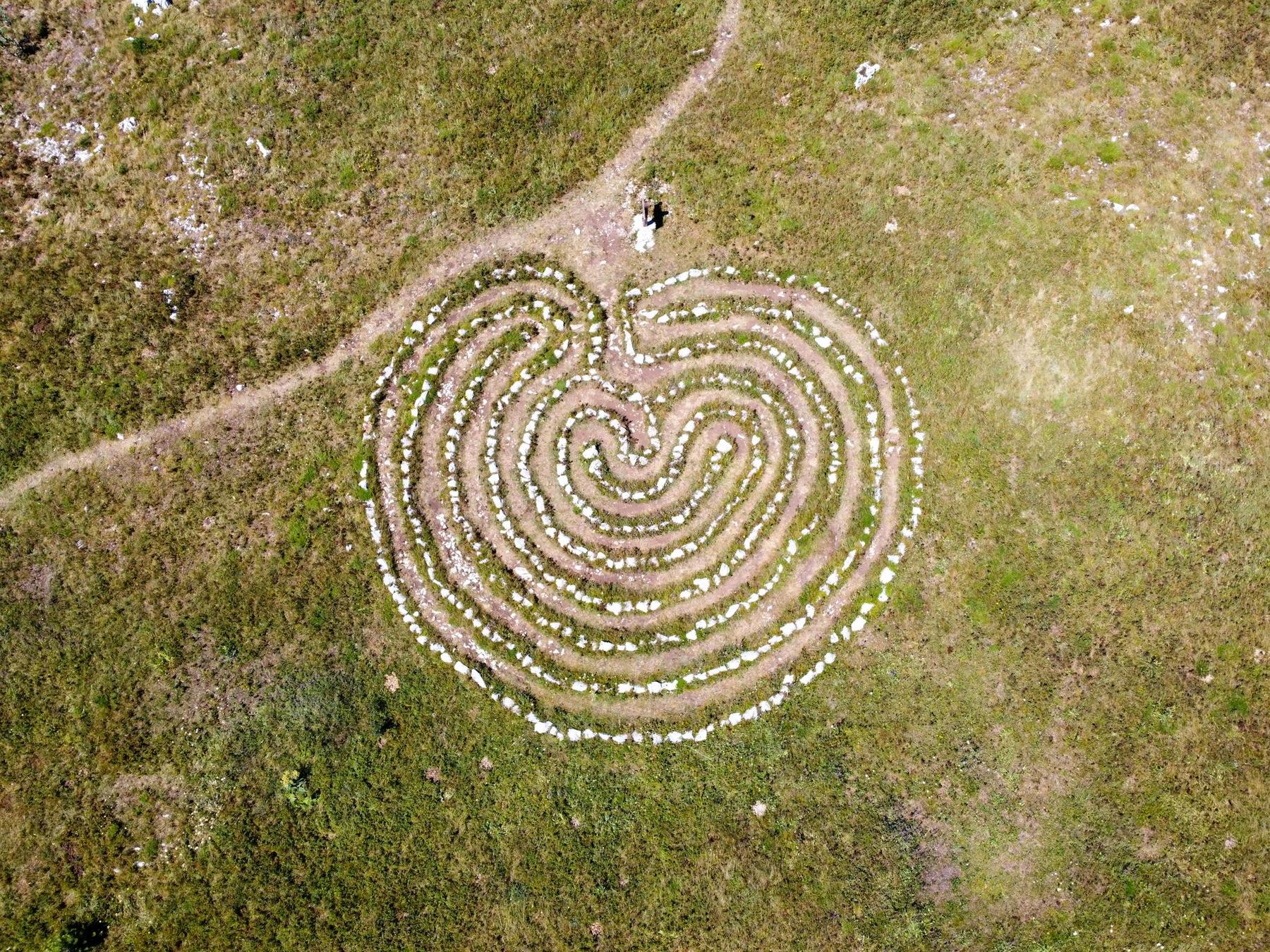Your hands hold extraordinary potential. Beyond their mechanical function, these remarkable extensions of your nervous system serve as gateways to altered states of consciousness, energetic balance, and profound inner transformation. For thousands of years, practitioners across ancient spiritual traditions have understood what modern neuroscience is only beginning to validate: the simple positioning of your fingers can influence brain function, regulate your nervous system, and channel subtle energies throughout your body. Yet despite this rich heritage, many meditation practitioners overlook mudras entirely—missing a powerful tool that requires no equipment, costs nothing, and can be practised anywhere, at any time.
What Are Mudras and How Do They Work?
Mudras are symbolic hand gestures deeply rooted in Hindu, Buddhist, and Jain spiritual traditions, serving as energetic “seals” that direct the flow of prana—or life force energy—through the body. The Sanskrit word “mudra” translates both as “seal” and as a combination of “mud” (joy) and “ra” (produce), suggesting these gestures function to generate happiness and seal internal energy pathways.
The neurological foundation for mudras’ effectiveness lies in a remarkable anatomical fact: your motor and sensory cortices allocate approximately one-third of their surface area to hand representation—significantly more than to your entire trunk and extremities combined. Research published in the National Academy of Sciences in 2009 demonstrated that hand movements stimulate the same brain regions as spoken or written language, establishing a direct neural pathway between manual gestures and cognitive processing.
From an Ayurvedic perspective, mudras operate through the five-element framework that comprises all matter. Each finger corresponds to a specific element: the thumb represents fire (agni), the index finger governs air (vayu), the middle finger embodies ether or space (akasha), the ring finger channels earth (prithvi), and the little finger relates to water (jala). By touching specific fingers together, practitioners can theoretically balance these elements within their physiological and energetic systems.
The mechanism extends beyond simple elemental theory. Mudras influence the body’s nadi system—a network of subtle energy channels similar to acupuncture meridians. The three primary nadis—ida (lunar, cooling energy along the left side), pingala (solar, activating energy along the right side), and sushumna (central channel)—interact with the seven main chakras, or energy centres, along the spine. Different mudras activate, balance, and stimulate specific chakras depending on hand position and practitioner intention.
Which Mudras Are Most Effective for Different Meditation Goals?
The selection of appropriate mudras depends entirely on your specific objectives and current energetic state. Below is a comprehensive comparison of primary mudras and their applications:
| Mudra Name | Hand Position | Primary Element | Key Benefits | Best Used For |
|---|---|---|---|---|
| Gyan Mudra | Index fingertip touches thumb tip | Air | Improves concentration, memory, mental clarity | Beginners, extended meditation, wisdom integration |
| Prana Mudra | Ring and little fingertips touch thumb | Earth & Water | Activates vitality, boosts immunity, reduces fatigue | Energy enhancement, eye health |
| Vayu Mudra | Index finger base pressed to thumb base | Air | Relieves anxiety, eases joint pain, calms nervousness | Stress reduction, digestive issues |
| Apana Mudra | Middle and ring fingertips touch thumb | Earth & Ether | Detoxifies body, aids elimination, purifies | Digestive health, internal cleansing |
| Dhyana Mudra | Right hand atop left, thumbs touching | All elements | Deepens meditation, induces blissful states | Extended meditation sessions, Zen practice |
| Anjali Mudra | Palms together at heart | All elements | Balances energy, cultivates gratitude, centres mind | Gratitude practices, emotional balance |
| Hakini Mudra | All fingertips touch, forming triangle | All elements | Connects brain hemispheres, enhances memory | Mental clarity, learning, spiritual connection |
Gyan Mudra stands as the quintessential meditation mudra, depicted in countless representations of meditating figures throughout history. This “mudra of knowledge” connects the individual soul with universal consciousness, particularly when the thumb covers the index fingernail. Optimal results emerge from 35-40 minutes of daily practice, though beginners may start with 10-minute sessions.
Prana Mudra, the “mudra of life,” addresses physical and energetic depletion. By combining earth and water elements whilst reducing fire, this gesture activates dormant energy reserves and strengthens immune function. Practitioners experiencing chronic fatigue, vision problems, or lacking confidence in initiating new projects find particular benefit from 30-40 minutes of daily practice.
Dhyana Mudra, the cosmic mudra of meditation, appears in most Buddha statues and facilitates the deepest meditative states. The oval or triangle formed by the touching thumbs symbolises the union of individual and universal consciousness. This mudra proves especially effective for extended meditation sessions where the goal involves achieving samadhi-states of blissful absorption.
For emotional healing and heart-centred work, Anjali Mudra provides grounding whilst harmonising left and right brain hemispheres. This familiar prayer position expresses reverence, gratitude, and humility whilst balancing internal energies. It serves as an excellent centring practice before deeper meditation work.
Practitioners seeking cognitive enhancement benefit from Hakini Mudra, which directly stimulates the connection between logical and intuitive brain hemispheres. The triangle formed by all fingertips creates an energetic circuit particularly suited to third eye chakra activation and communication with deeper wisdom.
How Long Should You Practice Mudras for Optimal Benefits?
Duration emerges as the critical variable determining mudra effectiveness. Research conducted at Swami Vivekananda Yoga Anusandhana Samsthana using Electrophotonic Imaging technology revealed statistically significant changes in energy parameters only after mudra practice exceeded 20 minutes in a single session. The study achieved classification accuracy of 80-100% for post-intervention mudra effects, compared to 50-80% pre-intervention, with effect size far more pronounced than control groups.
These findings establish a clear hierarchy of practice duration:
Minimum threshold: Five minutes produces subtle effects, primarily through attentional focus and hand-brain neural activation. Whilst beneficial, this duration rarely generates the measurable energetic shifts associated with mudra practice.
Recommended duration: Twenty to 45 minutes represents the optimal window for significant benefits. At this duration, neuroplastic changes begin, parasympathetic nervous system activation deepens, and energetic circuits complete their formation. Most traditional texts recommend 30-40 minutes for mudras with specific therapeutic targets.
Long-term protocol: Consistency matters more than isolated intensive sessions. Research indicates that six or more sessions over a minimum one-week period produce measurable, sustained results. Daily practice creates cumulative neurological changes that amplify mudra effectiveness over time.
Timing considerations further enhance results. Early morning practice during Brahma Muhurta—the pre-dawn period—capitalises on the mind’s naturally calm and receptive state. Post-yoga or pranayama sessions benefit from already activated energy channels. Evening practice with gentle mudras like Varun or Shunya calms the nervous system before sleep.
The position of your palms also influences energetic quality. Palms facing upward invite receptivity and connection to celestial energies, whilst palms facing downward emphasise grounding and earthly stability. Hands resting on knees or thighs provide comfortable positioning for sustained practice, whereas hands at heart centre deepen emotional connection.
Can Mudras Be Combined with Other Wellness Practices?
Mudras function synergistically with complementary wellness modalities, creating amplified benefits through multi-modal engagement. The integration follows a principle of energetic coherence: practices that similarly influence the nervous system, breath, or consciousness generate multiplicative rather than merely additive effects.
Pranayama integration represents the most powerful combination. Breathing exercises directly influence the autonomic nervous system, and when paired with mudras, create profound shifts in energetic circulation. The combination enhances parasympathetic tone, counterbalancing sympathetic stress responses whilst directing prana along specific nadis. Extended exhalation whilst holding a mudra particularly amplifies the relaxation response.
Asana practice provides the physical foundation for effective mudra work. Yoga postures prepare the body’s energy channels, release physical blockages, and establish the flexibility required for comfortable sustained mudra holding. Incorporating mudras into static poses transforms the practice from purely physical to energetically integrated.
Mantra chanting creates vibrational resonance that complements mudra practice. Specific bija mantras—seed sounds associated with individual chakras—when synchronised with corresponding mudras, establish powerful energetic circuits. The sound vibrations physically stimulate cranial structures whilst the mudra directs resulting energy flows.
Visualisation techniques strengthen neural pathways activated by mudras. Mental imagery of light, colour, or energy flowing through fingers whilst holding specific mudras reinforces the mind-body connection. This practice enhances neuroplasticity—the brain’s ability to form new synaptic connections—accelerating mudra effectiveness.
Affirmation practices create new neurological associations when paired with mudras. Stating positive intentions aligned with a mudra’s properties whilst holding the gesture reinforces cognitive reframing. The motor memory of the hand position becomes anchored to the verbal affirmation, allowing quick access to desired mental states.
Chakra balancing protocols naturally incorporate mudras as each gesture corresponds to specific energy centres. A complete chakra meditation moving through Prithvi Mudra (root), Varun Mudra (sacral), Surya Mudra (solar plexus), Hridaya Mudra (heart), Buddhi Mudra (throat), Hakini Mudra (third eye), and Dhyana Mudra (crown) creates systematic energetic alignment.
Within holistic wellness contexts, mudras support relaxation, discomfort management, anxious thought reduction, and present-moment awareness. They provide accessible, cost-effective tools requiring no equipment and suitable for any age or physical condition.
What Does Modern Science Say About Mudra Effectiveness?
Contemporary neuroscience increasingly validates ancient mudra knowledge whilst simultaneously exposing significant research gaps. The evidence base, though growing, remains preliminary compared to more extensively studied meditation practices.
Neuroplasticity mechanisms provide the strongest scientific rationale for mudra effectiveness. Novel motor practices—including unusual hand positions—generate synaptogenesis in the brain, establishing new neural pathways and strengthening existing connections. The extensive cortical representation of hands means mudra practice creates disproportionately large neurological changes relative to the simple physical movements involved.
Interoceptive system development represents another validated mechanism. Interoception—awareness of internal bodily states—develops through practices that direct attention to subtle somatic experiences. Mudra practice with focused attention on temperature changes, energetic sensations, and internal states influences the right anterior insula, a brain region critical for emotional awareness and the subjective experience of embodiment.
Autonomic nervous system modulation occurs through multiple pathways during mudra practice. The combination of focused attention, breath awareness, and motor engagement activates parasympathetic tone whilst reducing sympathetic activation. This shift manifests in measurable changes including reduced heart rate, lowered blood pressure, and altered heart rate variability patterns.
Epigenetic expression changes emerge from sustained contemplative practices. Attention to breathing, somatic experience, and emotional states triggers genetic expression alterations that produce the well-documented relaxation response. Mudras function as physical anchors facilitating this attentional focus, potentially accelerating epigenetic changes.
Cognitive reframing through symbolic meaning operates through prefrontal and limbic system interactions. The symbolic significance attributed to specific mudras—whether traditional or personally meaningful—influences narrative processing. These altered narratives affect emotional regulation circuits, providing therapeutic benefits independent of any energetic mechanisms.
Cross-lateralisation and sensorimotor integration result from touching specific fingers together. This tactile feedback promotes integration between motor planning and sensory perception, enhancing proprioceptive awareness and potentially improving body-mind coherence.
Current research limitations include small sample sizes, lack of proper control groups, and the difficulty of isolating mudra practice from confounding variables like breath work, meditation, or expectation effects. Most studies combine mudras with other practices, preventing clear attribution of specific benefits. No published research has documented adverse effects or contraindications, suggesting an excellent safety profile.
Future research directions include functional magnetic resonance imaging studies during mudra practice, heart rate variability measurements comparing different mudras, electromyography analysis of muscle activation patterns, and longitudinal studies tracking sustained practice effects. The field would benefit particularly from dose-response studies examining optimal duration and frequency protocols.
Establishing Your Personal Mudra Practice
Beginning a mudra practice requires neither special equipment nor extraordinary flexibility. Accessibility represents one of mudra practice’s greatest strengths—these ancient techniques translate seamlessly into modern life.
Start with foundational mudras like Gyan or Anjali, practising five to ten minutes daily. These straightforward positions minimise discomfort whilst establishing familiarity with subtle energetic sensations. Progress to longer sessions as comfort increases, eventually reaching the 20-minute threshold where measurable changes begin.
Choose mudras aligned with current needs. For concentration work, select Gyan, Hakini, or Dhyana Mudra. Anxiety relief responds to Vayu or Shunya Mudra. Energy depletion benefits from Prana or Surya Mudra. Emotional processing suits Hridaya or Anjali Mudra. Match the tool to your immediate requirement whilst maintaining consistent daily practice for cumulative benefits.
Create supportive environmental conditions. Find quiet spaces without distractions where you can maintain focus. Practise at consistent times to establish habit patterns. Early morning capitalises on natural mental clarity; evening sessions prepare for restful sleep. Keep a meditation journal tracking subjective experiences, noting which mudras produce particular effects for your unique constitution.
Maintain realistic expectations. Individual variation means effects manifest differently for each practitioner. Effectiveness depends on intention, consistency, and subtle awareness rather than forceful effort. Results may emerge gradually over days or weeks rather than immediately. Patience during this developmental period proves essential.
Comfort remains paramount throughout practice. Apply only gentle pressure when touching fingers together; excessive force creates tension counterproductive to mudra’s purpose. If any position causes discomfort, adjust the angle or pressure, or select a different mudra. The practice should feel stable yet easeful.
Integration with breathing enhances effectiveness exponentially. Begin with natural breath awareness whilst holding your chosen mudra. Progress to counted breathing, perhaps inhaling for four counts and exhaling for six. The lengthened exhale activates parasympathetic tone whilst the counting occupies the thinking mind, allowing deeper meditative states.
Set clear intentions before practice. State your purpose—whether stress reduction, mental clarity, emotional healing, or spiritual development. Align this intention with your selected mudra’s properties. The intention focuses mental energy whilst the mudra directs that focus through specific energetic channels.
Moving Forward with Ancient Wisdom
Mudras in meditation represent a sophisticated technology developed over millennia and increasingly validated by contemporary neuroscience. These hand positions offer accessible, evidence-supported tools for enhancing meditation practice, regulating nervous system function, and potentially influencing subtle energy systems. From Gyan Mudra’s wisdom-enhancing properties to Dhyana Mudra’s capacity for deep meditative absorption, each gesture provides specific benefits whilst requiring minimal time investment and no special equipment.
The growing scientific evidence—particularly around neuroplasticity, interoceptive awareness, and autonomic regulation—provides mechanistic frameworks explaining mudra effectiveness beyond traditional energetic models. Yet research gaps remain, offering opportunities for rigorous investigation that may further validate or refine ancient wisdom.
For practitioners seeking to deepen meditation practice, mudras offer elegant simplicity: position your hands with intention, maintain the gesture with awareness, and observe the subtle shifts in consciousness that emerge. Whether you practise for mental clarity, emotional balance, physical vitality, or spiritual development, these ancient hand positions provide a bridge between deliberate action and profound transformation.
Looking to discuss your health options? Speak to us and see if you’re eligible today.
How quickly can I expect to notice results from practising mudras?
Results vary considerably based on individual constitution, consistency of practice, and the specific mudra employed. Some practitioners report subtle shifts in mental state within a single five-minute session, particularly with mudras like Gyan or Anjali that promote immediate centring effects. However, research indicates measurable energetic changes require a minimum of 20-minute sessions, with optimal results emerging after six or more sessions over at least one week. Therapeutic benefits for specific conditions typically manifest after several weeks of consistent daily practice.
Can I practise mudras if I have arthritis or limited hand mobility?
Mudras generally prove accessible even with limited hand mobility, though modifications may be necessary. The practice requires no force—gentle touching of fingertips suffices to complete energetic circuits. If traditional positions cause discomfort, adapt the mudra by bringing fingers as close together as comfort allows, or visualise the hand position whilst holding a modified version. Some practitioners with severe arthritis successfully practise using only one hand or focusing on mudras requiring minimal finger flexion. It is advisable to consult with a qualified yoga therapist for personalised modifications.
Should I practise the same mudra every day or rotate between different ones?
Both approaches offer validity depending on your goals. Practising a single mudra consistently for extended periods (weeks or months) allows deep familiarisation with its specific energetic qualities and maximises therapeutic benefits for targeted conditions. This approach suits practitioners addressing particular imbalances. Alternatively, rotating through different mudras based on daily needs provides variety and addresses multiple areas simultaneously. Many practitioners maintain a core mudra for extended meditation while incorporating others as needed for immediate requirements.
Is it necessary to understand the energetic theory behind mudras for them to be effective?
Mudras function through multiple mechanisms, some requiring conscious understanding and others operating independently of belief or knowledge. The neurological benefits—including motor-sensory integration, neuroplasticity stimulation, and hand-brain neural activation—occur regardless of a practitioner’s understanding of energetic models. However, understanding traditional frameworks and aligning intentions may amplify effects through cognitive and placebo mechanisms.
Can mudras be practised during other activities or only during formal meditation?
While formal meditation provides the ideal context for mudra practice, many gestures can be adapted to daily activities with sustained awareness. Simple mudras like Gyan (fingertip to thumb) can be held during walking, reading, or even during conversations when the hands rest naturally. The deepest benefits typically emerge from dedicated practice that combines mudras with breath awareness and minimal external distraction, though integrating them into daily life can reinforce mindful awareness.













